Introduction to Young Bird Racing
Young bird racing represents a vibrant and competitive segment within the larger world of pigeon racing. This facet revolves around racing pigeons that are less than one year old, typically hatched within the current season. The concept of young bird racing aims to test the potential and skill of juvenile pigeons before they fully mature. This allows breeders and trainers to gauge their young birds’ performance, endurance, and homing ability at an early stage.
The significance of young bird racing cannot be understated. Within the pigeon racing community, these races hold immense value as they provide a platform for fanciers to showcase their breeding programs and training methodologies. The competition is often intense, given that young birds are generally less experienced and more unpredictable in their performance. Analyzing young bird races, therefore, offers vital insights into the strengths and weaknesses of emerging birds, guiding future training and breeding decisions.
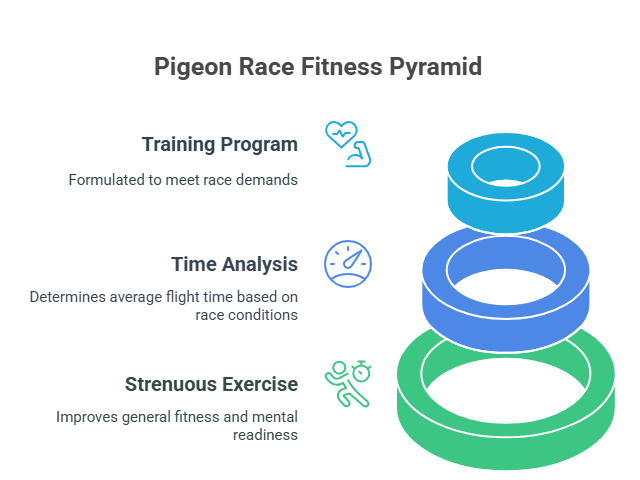
Key differences between young bird racing and old bird races revolve around the age and maturity of the participating pigeons. Young birds, being in their first year, are racing for the first time and exhibit different behavioral patterns compared to old birds, which have multiple seasons of racing experience. This distinction influences strategies employed by trainers, the distance of the races, and the evaluation of race results. Young bird races are often viewed as a precursor to the more demanding old bird races, providing a glimpse into a pigeon’s potential long-term performance.
Understanding the intricacies of young bird racing sets the foundation for effectively analyzing race results. This extends beyond merely tracking who finishes first, to comprehensively evaluating factors such as flight time, weather conditions, and the health of the pigeons. Such analysis is crucial for optimizing training regimens and enhancing the overall success of pigeon racing endeavors.
Understanding Key Metrics in Young Bird Racing
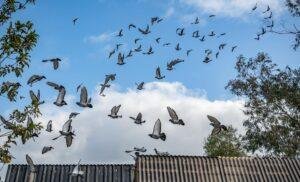
Analyzing the performance of young birds in racing pigeons involves a thorough understanding of several key metrics. These metrics offer insights into a pigeon’s capabilities and areas for potential improvement, guiding breeders and trainers towards their primary aim of optimizing the racing performance of their birds.
One of the most fundamental metrics in pigeon racing is speed, typically measured in yards per minute (YPM). Speed reflects a bird’s pace over the race distance, a crucial factor in determining not just individual success, but also long-term breeding potential. Evaluating speed helps identify pigeons that consistently outperform their peers, making them valuable assets in a racing loft.
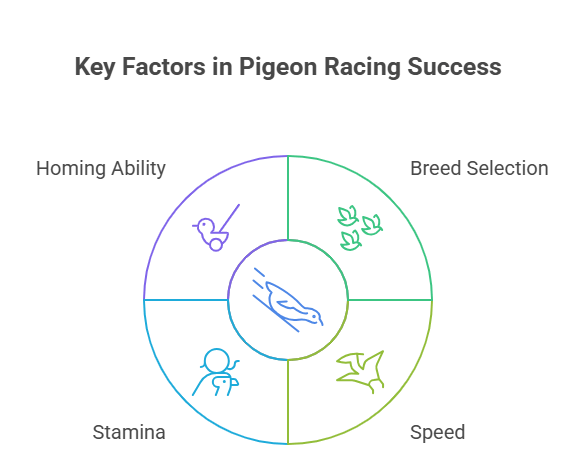
Consistency is another vital metric. This measures a bird’s ability to maintain its performance across multiple races. A pigeon that shows consistent high-speed returns regardless of varying weather conditions and distances signifies robust training and inherent quality. Consistency can often be a more reliable indicator of a bird’s value than isolated top-speed performances.
Return rates, or the percentage of birds that return to their lofts after a race, provide important data on the overall health and homing ability of the bird. High return rates are indicative of proper training, strong orientation skills, and good physical condition. Conversely, lower return rates may highlight issues such as inadequate training, health problems, or an unsuitable racing strategy.
Dropout rates, or the percentage of birds that fail to return, is a metric that can reveal underlying issues. High dropout rates may point to weaknesses in the training regimen, health problems, or other factors that need to be addressed. This metric is crucial for identifying and rectifying elements that contribute to a bird’s failure to complete its races.
Understanding and closely monitoring these key metrics provide trainers and breeders with actionable insights. By paying attention to speed, consistency, return rates, and dropout rates, stakeholders in the racing pigeon community can better identify high-performance birds, tailor training methods, and improve overall racing strategy.
Data Collection: Gathering Race Results
Collecting and organizing data from young bird races are fundamental to understanding the performance dynamics in racing pigeons. Success in this endeavor begins with maintaining accurate and up-to-date race records. These records serve as the cornerstone for any subsequent analysis, enabling pigeon fanciers and researchers to decode various performance metrics and trends.
A structured approach to data collection should encompass multiple reliable sources. Race organizers are primary custodians of race results, often maintaining comprehensive databases that detail finishing times, positions, and conditions. In addition, pigeon racing clubs usually keep meticulous records and can thus provide invaluable data. Engaging with these entities can ensure an uninterrupted flow of accurate race outcome information.
Effective data management is crucial for meaningful analysis. Several tools and software platforms are designed specifically for organizing and managing racing pigeon data. Modern database management systems or race management software can simplify the process, allowing for the efficient categorization, storage, and retrieval of data. Excel sheets and custom databases can be invaluable in this regard, offering flexibility and ease of use for various data processing needs.
Key elements to focus on when collecting race results include the date and location of the race, weather conditions, the number of birds participating, finishing times, velocities, and the positions of each pigeon. These factors provide a holistic view of each race, enabling detailed performance assessments. Additionally, integrating GPS or RFID technology in race bibs further enriches the data, offering insights into the pigeons’ flight paths and time splits.
Adopting a systematic approach to data collection ensures that insights drawn from race results are both accurate and actionable. By leveraging thorough records, reliable data sources, and efficient management tools, one can build a robust foundation for analyzing young bird race results, ultimately driving improved performance and success in the competitive world of racing pigeons.
Analyzing Individual Pigeon Performance
Analyzing the performance of individual racing pigeons involves a multi-faceted approach that combines statistical analysis, consistency checks, and comparative assessments. The first step in this process is to gather and organize race times. Statistical measures such as mean, median, and standard deviation are useful tools for processing these times. By calculating these metrics, you can discern patterns and anomalies that may indicate a pigeon’s unique capabilities or areas needing improvement.
Consistency is another critical metric. A pigeon that consistently performs well across multiple races is generally a more reliable asset compared to one with sporadic high performances. To measure consistency, tracking the pigeon’s rank in each race and computing the variance between performances offers reliable insights. Consistent performance often points to genetic strengths or superior training methods, while inconsistency may highlight areas for training focus or health issues.
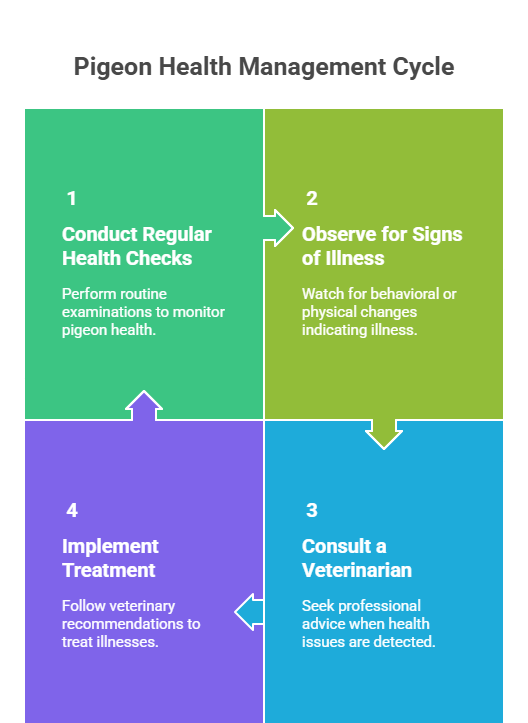
Comparing the individual performance against the flock averages is a valuable benchmarking technique. This involves looking at the pigeon’s race times and positions relative to the overall flock. A pigeon that consistently outraces its peers or shows smaller time variances might be considered a standout performer. Additionally, understanding environmental and situational factors of each race such as weather conditions, distance, and terrain plays a crucial role in interpreting these statistics. A standout performer in adverse conditions might indicate extraordinary resilience or a superior adaptation strategy.
Identifying standout performers not only helps in recognizing high achievers but also in understanding the factors contributing to their success. This can inform breeding choices, training methods, and resource allocation. For instance, a pigeon that excels in long-distance races might be bred and trained differently than one thriving in sprint races. By meticulously analyzing individual pigeon performances through these robust techniques, you can ensure a more strategic approach in managing and leveraging your racing pigeons’ capabilities.
Assessing Loft Performance
Evaluating the overall performance of a loft involves a careful analysis of the collective results of all pigeons from that particular loft. This analysis can reveal critical trends and anomalies, offering valuable insights into the effectiveness of loft management practices. To start, aggregating race results data from multiple races is essential. This includes not only the finishing positions of each pigeon but also factors such as the distance covered, weather conditions, and the time taken to complete the race.
A pivotal aspect of loft performance assessment is identifying performance patterns. Trends in race results can indicate the strengths and weaknesses of a loft. For instance, consistently high rankings or improvements over successive races suggest effective loft management and training programs. Conversely, if performance deteriorates or shows erratic fluctuations, it may point to underlying issues such as health problems, nutritional deficiencies, or suboptimal training routines.
Another crucial factor to consider is the comparative performance of different age groups within the loft. Young birds might perform differently compared to older, more experienced pigeons. Analyzing the results of young bird races specifically can help gauge the effectiveness of early training and conditioning programs. Observing how young pigeons mature and improve over time can be invaluable for shaping future training tactics.
Loft management practices, including feeding regimes, health maintenance, and environmental conditions, could significantly impact race outcomes. Documenting and analyzing changes in these practices alongside performance data can help identify what strategies are most effective. For instance, adjustments in diet or loft ventilation that coincide with performance improvements may suggest areas for further optimization.
To make informed decisions, integrating data visualization tools such as charts and graphs can be beneficial. Visual representation of data can make it easier to spot trends and anomalies at a glance. In summary, a detailed, multi-faceted approach to assessing loft performance is essential for achieving and maintaining success in the competitive world of pigeon racing.
Benchmarking Against Competitors
Benchmarking is a critical aspect for any pigeon fancier aiming to excel in young bird races. By comparing the performance of their pigeons against competitors, fanciers can gain valuable insights into where they stand in the competitive landscape. This process involves several steps, including collecting comparative data, focusing on relevant metrics, and drawing actionable conclusions.
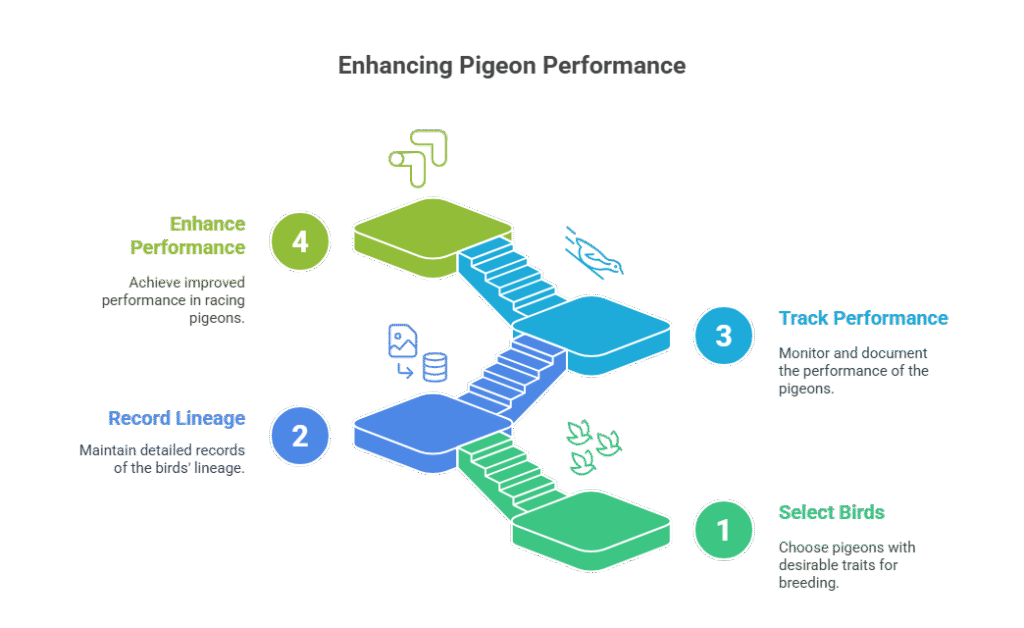
First, gathering comparative data is essential. This can be done by reviewing race results from official sources, participating in local clubs, and analyzing data shared by other pigeon fanciers. The key is to compile enough data that allows for a meaningful comparison. Consistent and reliable data sources improve the accuracy of benchmarking and enable a clearer understanding of the competitive environment.
Once the data is collected, it is important to focus on specific metrics. Key performance indicators include race times, speed, and consistency across multiple races. By examining these metrics, pigeon fanciers can identify patterns and trends. For example, consistently high-speed results may indicate strong birds, while variability in performance could highlight areas for improvement, such as training or health management.
Moreover, it is essential to compare similar race conditions to ensure the benchmarking is valid. Variables such as weather, race distance, and the number of pigeons participating can significantly impact results. Therefore, comparisons should be made with races that have similar characteristics to produce actionable insights.
Understanding where your birds stand in relation to others offers several benefits. It allows pigeon fanciers to identify their pigeons’ strengths, such as high endurance or speed, and leverage these attributes. Equally important, it highlights areas for improvement. By pinpointing these weaknesses, fanciers can implement targeted training programs or health interventions to enhance performance.
In conclusion, benchmarking against competitors is a vital tool for any pigeon fancier serious about improving their young bird race results. Through diligent data collection, focusing on key metrics, and making valid comparisons, fanciers can gain comprehensive insights into their birds’ competitive standings and make informed decisions to drive success.
Identifying Patterns and Predicting Future Performance
Understanding how to analyze young bird race results in racing pigeons involves a meticulous examination of various factors that impact performance. To predict future success, it is crucial to look for discernible patterns in past race data, which may provide valuable insights. One of the primary elements to consider is seasonal trends. Pigeons often perform differently based on the time of year, influenced by factors such as temperature, daylight hours, and natural molting cycles. By tracking performance across different seasons, fanciers can identify optimal times for racing and necessary adjustments to the training regimen.
Weather conditions hold significant sway over the outcomes of pigeon races. Analyzing how different weather conditions — such as wind direction and speed, precipitation, and temperature — affect race results can shed light on which birds perform best in varying circumstances. For instance, a pigeon that excels in headwinds may indicate superior endurance and wing strength. Conversely, birds that struggle in adverse weather conditions might require tailored training to build resilience.
Training regimens are another critical factor in predicting future performance. Assessing the impact of different training schedules, distances, and intensities on race results can illuminate beneficial practices. Young birds, for example, might respond better to shorter, more frequent training sessions, which can aid in building their stamina and navigation skills without causing undue stress. Pigeon fanciers can leverage this data to fine-tune their training protocols, ensuring the birds are in peak condition leading up to races.
By meticulously analyzing these patterns, pigeon racing enthusiasts can make informed decisions to optimize their birds’ performance. Recognizing repeatable trends allows for strategic adjustments in training and preparation, ultimately enhancing the likelihood of success in future races. Keeping detailed records of race conditions and results is essential in this process, enabling a continuous improvement cycle based on empirical evidence.
Strategies for Improving Race Performance
Enhancing the performance of young racing pigeons necessitates a comprehensive approach that combines training, nutrition, health care, and optimal loft management. By implementing these strategies, pigeon fanciers can significantly boost their pigeons’ chances of racing success.
Training Techniques: Effective training is foundational to developing a young racing pigeon’s endurance, speed, and navigational abilities. Initiating a consistent training schedule from an early age helps pigeons acclimate to the demands of long-distance flights. Gradually increasing flight distances and incorporating both short and long training flights can foster their stamina. Additionally, practicing homing flights from various locations enables pigeons to develop a keen sense of direction and improves their problem-solving skills.
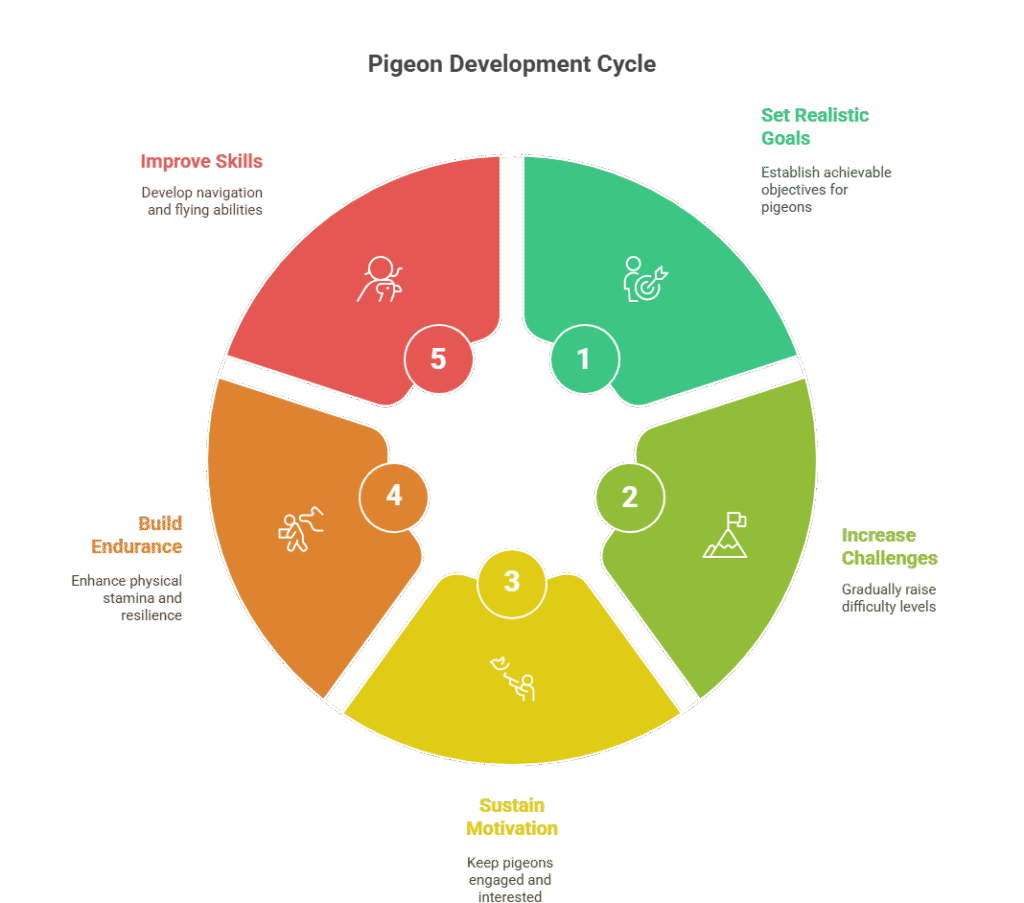
Diet and Nutrition: Proper diet and nutrition are critical for maintaining the fitness and energy levels necessary for racing. A balanced diet rich in carbohydrates, proteins, vitamins, and minerals supports muscle development and overall health. Including grains, seeds, and legumes ensures pigeon receive the necessary nutrients. Supplements like calcium and vitamins B and E can further enhance their performance. It’s also crucial to monitor their hydration levels, especially during training and races, to prevent fatigue.
Health and Care Practices: Regular health checks and preventive care are vital for keeping young racing pigeons in peak condition. Implementing a vaccination schedule helps protect against common pigeon diseases. Routine parasite control, including deworming and mite prevention, ensures pigeons remain active and healthy. Monitoring their condition closely allows for early detection of health issues and timely intervention, which is crucial for maintaining optimal performance.
Loft Management Improvements: The loft environment significantly impacts a pigeon’s well-being and performance. Ensuring proper ventilation, cleanliness, and adequate space reduces stress and prevents respiratory issues. A well-designed loft with secure perches and nesting areas contributes to pigeons’ comfort and safety. Periodic sanitization mitigates the risk of infections, thereby safeguarding their health. Lastly, maintaining a calm and stable environment in the loft minimizes stress, which can positively affect their racing aptitude.
By adopting these targeted strategies, pigeon fanciers can create an environment conducive to the development and success of young racing pigeons. Through dedicated training, proper nutrition, vigilant health care, and optimal loft management, the potential for achieving racing excellence is significantly enhanced.

